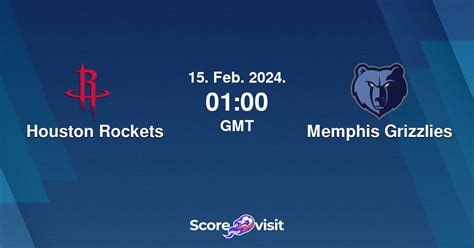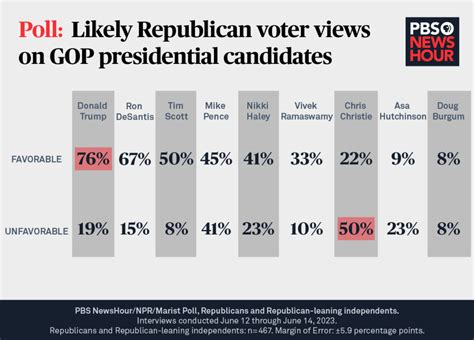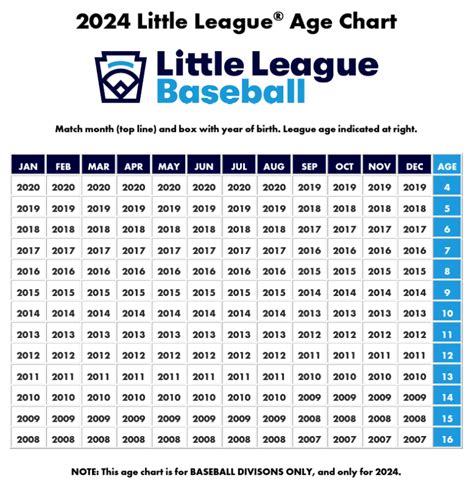Explore the essentials of baseball contracts, their significance, key terms, performance impacts, salary caps, and future trends in this comprehensive guide.Baseball, America’s pastime, is as much about the game on the field as it is about the intricate web of contracts that govern the relationships between players, teams, and agents. For those new to the sport or looking to deepen their understanding, navigating the world of baseball contracts can seem daunting. This beginner’s guide is designed to demystify the complexities of player agreements, highlighting their critical role in shaping a player’s career and the financial landscape of the league. From key terms and concepts to the influence of player performance on negotiations, we will explore the essential aspects of baseball contracts. Additionally, we’ll examine salary caps and the evolving trends in contract negotiations, equipping you with the knowledge to appreciate this vital element of the sport. Whether you’re a fan, aspiring agent, or just curious, this guide will provide you with valuable insights into the fascinating realm of baseball contracts.
What Are Baseball Contracts and Their Importance?
Understanding baseball contracts is essential for anyone interested in the sport, whether you are a fan, player, or aspiring agent. These contracts serve as formal agreements between players and teams, outlining the terms of employment, compensation, and various rights for both parties. Typically, a baseball contract includes details such as the duration of the contract, the player’s salary, bonuses, and clauses related to trades, injuries, or termination.
The significance of these contracts extends beyond mere paperwork. They are foundational to the operational structure of Major League Baseball (MLB) and minor leagues, providing a legal framework that governs the relationships between players and franchises. Understanding baseball contracts allows stakeholders to grasp the financial dynamics at play, as well as the rights and responsibilities that players undertake when they join a team.
Moreover, these contracts can influence team strategies, salary cap decisions, and player acquisitions. The importance of understanding baseball contracts also lies in their impact on the overall landscape of the sport, including how talent is valued and incentivized within the league. The nuances of these agreements can reflect trends in player performance, market demands, and the evolving nature of the game itself.
Key Terms To Understand In Baseball Contracts
Understanding baseball contracts involves familiarizing yourself with several key terms that can impact negotiations and player agreements. Here are some essential terms you should know:
- Base Salary: The guaranteed amount a player will earn during a season, excluding bonuses or incentives.
- Signing Bonus: A one-time payment made to a player upon signing a contract, often used to attract top talent.
- Incentives: Additional payments that a player can earn based on performance metrics, such as home runs or games played.
- Option Year: A year in which the team has the choice to extend the player’s contract or let them become a free agent.
- Arbitration: A method that allows players with certain service time to increase their salaries through negotiation, often by presenting their case to a neutral third party.
- Free Agency: The status of a player who has completed their contract and is free to sign with any team.
- Non-Tender: The process by which a team decides not to offer a contract to a player, effectively making them a free agent.
By understanding these key terms, you’ll gain a clearer insight into the complexities of understanding baseball contracts and how they can affect player dynamics within the sport.
How Player Performance Influences Contract Negotiations
One of the most significant factors in understanding baseball contracts is how player performance impacts contract negotiations. Major League Baseball (MLB) teams constantly assess players’ abilities and contributions on the field to determine their market value. When negotiating contracts, both the player and the team consider various performance metrics, including batting averages, home runs, on-base percentages, and defensive statistics. This helps teams justify the salaries they offer and players seek.
Performance during the season often dictates contract renewals, extensions, and free-agent signings. For instance, a player who has a standout season—including achieving personal records or leading statistical categories—can leverage that performance to command a higher salary. Conversely, if a player struggles with injuries or underperforms in crucial areas, their negotiating power diminishes significantly.
Advanced analytics have also changed the landscape of how player performance is evaluated. Teams leverage statistics like Wins Above Replacement (WAR) and other sabermetric models to gain a comprehensive perspective on a player’s value and contribution to the team. Such data can serve as a crucial bargaining tool, with teams sometimes willing to offer long-term contracts to younger players based on their potential upside and crazy statistical projections.
Understanding how player performance influences contract negotiations is critical for both players and teams. In a competitive league such as MLB, where every game counts and performance metrics are analyzed intensely, contracts are often a reflection of not just past achievements but also future expectations.
Understanding Baseball Salary Caps and Their Impact
In the world of professional sports, salary caps play a crucial role in maintaining competitive balance among teams. When it comes to understanding baseball contracts, knowing how salary caps work is essential for grasping the economic dynamics within Major League Baseball (MLB).
Unlike other major sports leagues, MLB does not have a strict salary cap system. Instead, it operates under a luxury tax system, which imposes financial penalties on teams that exceed a predetermined payroll threshold. This unique approach allows for flexibility in contract negotiations while also ensuring that teams are held accountable for their spending.
Here are some key aspects of how salary caps and the luxury tax system impact baseball contracts:
| Aspect | Description |
|---|---|
| Payroll Threshold | The luxury tax threshold is set annually, and teams with player payrolls exceeding this amount face financial penalties. |
| Competitive Balance | The luxury tax system aims to promote competitive balance by discouraging wealthier teams from monopolizing the best talent. |
| Contract Value | Understanding the implications of the luxury tax encourages teams to structure contracts strategically, avoiding payroll spikes. |
| Player Impact | Players’ contracts are influenced by the financial capabilities of their teams, particularly when negotiating with high-revenue franchises. |
While the absence of a stringent salary cap presents unique challenges and opportunities within MLB, it remains vital for fans and stakeholders to understand baseball contracts in the context of the league’s financial regulations. This understanding not only enhances appreciation for player negotiations and transactions but also underscores the importance of strategic financial planning by team management.
The Future of Baseball Contracts: Trends To Watch
As the landscape of sports continues to evolve, so do the dynamics of professional contracts in baseball. Several emerging trends are shaping the future of baseball contracts, and understanding these trends is crucial for fans, players, and teams alike.
One significant trend is the increasing role of analytics in contract negotiations. Teams are relying more on advanced statistics and data-driven insights to assess player performance and potential. This shift means that traditional metrics may be less influential, with less emphasis on factors such as batting average and more focus on metrics like OPS (On-base Plus Slugging) or WAR (Wins Above Replacement).
Another trend is the growing impact of player mobility and free agency. With rising salaries across the league, players are more inclined to test free agency instead of signing long-term deals with one team at the outset. This trend is leading to shorter contract lengths but potentially higher average annual values for players willing to take the risk.
The emphasis on player health and injury prevention is also a notable development in understanding baseball contracts. Teams are increasingly incorporating clauses related to health and performance incentives. These can include provisions addressing injuries, performance benchmarks, and guarantees based on a player’s availability over a specified period.
| Trend | Description |
|---|---|
| Analytics-Driven Contracts | Teams are using data to evaluate player performance beyond traditional metrics. |
| Player Mobility | Players are more likely to sign shorter contracts with higher annual values. |
| Health Incentives | Contracts increasingly include clauses tied to player health and performance benchmarks. |
The influence of international players and markets cannot be overlooked. As more players come from countries with established baseball traditions, teams must adapt their strategies to engage with a broader talent pool. This shift is leading to increased competition in the international free agency market, ultimately affecting how teams structure their contracts.
These trends illustrate how understanding baseball contracts is becoming increasingly complex. As analytics, mobility, health considerations, and global markets shape the future, players, agents, and teams must navigate these changes to succeed in the modern baseball landscape.
Frequently Asked Questions
What are the key components of a baseball contract?
A baseball contract typically includes the player’s salary, duration of the contract, bonuses, incentives, and clauses detailing the conditions of the contract.
How does salary arbitration work in baseball contracts?
Salary arbitration allows players with a certain amount of Major League experience to negotiate their salaries if they and their team cannot agree on a contract. An independent arbitrator resolves the dispute.
What is the difference between guaranteed and non-guaranteed contracts?
Guaranteed contracts ensure that a player will receive their full salary regardless of performance or injury, while non-guaranteed contracts only provide pay if the player remains on the team’s roster or fulfills certain conditions.
How are bonuses typically structured in baseball contracts?
Bonuses may be structured based on performance metrics such as home runs, games played, or awards earned. They can also include signing bonuses and roster bonuses for being included on the team.
What happens if a player is traded while under contract?
If a player is traded, their contract is typically transferred to the new team, which then assumes the terms of the original contract. Players usually have limited control over trades unless specific clauses are included.
What role do agents play in negotiating baseball contracts?
Agents represent players in negotiations with teams, advocating for the best possible terms and conditions. They have expertise in the industry and help players navigate contract complexities.
Can players renegotiate their contracts?
Players can renegotiate their contracts under certain circumstances, often after achieving significant performance milestones or if they have exhibited dramatically improved skills.









